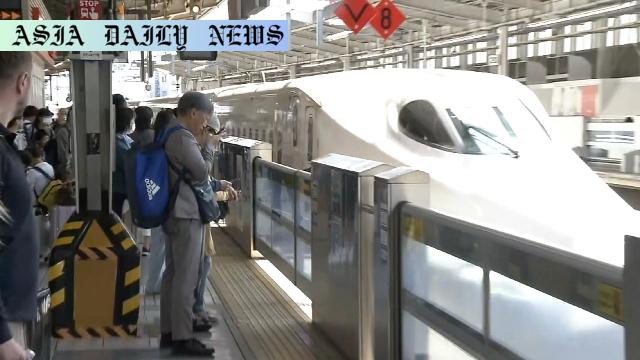Congestion peaks on highways, railways & flights, affecting holiday travel in Japan.
Congestion on Shinkansen bullet trains peaks as bookings fill rapidly.
Traffic jams on major expressways see backups over 30 kilometers.
Domestic flights from Tokyo report above 80% reservation rates.

Holiday Travel Chaos Across Japan
The annual spring holiday in Japan is traditionally a time for reunions and vacations. However, this year, as many people plan trips to their hometowns or leisure destinations, traffic congestion has surged to unprecedented levels. This phenomenon is putting considerable pressure on the country’s transportation networks, including highways, bullet trains, and domestic flights. The increasing traffic has significantly impacted both individual commuters and the broader logistical dynamics across Japan.
The Japan Railway group companies have reported that Shinkansen bullet trains departing from Tokyo are nearly fully booked during the peak travel days, particularly on Saturday. Nozomi and other bullet trains on the Tokaido Shinkansen Line leaving Tokyo Station in the morning reportedly have limited seat availability, evidencing the heightened demand during this period. Similarly, the non-reserved cars on the Tohoku and Hokuriku Shinkansen lines are witnessing full usage, leaving many forced to seek alternative modes of transportation or adjust their plans entirely.
Road Congestion Peaks on Highways
Expressways across Japan are also facing significant congestion as outbound lanes experience considerable backups. According to reports from the Japan Road Traffic Information Center, traffic on key expressways such as the Tomei and Kanetsu lines has been impacted the most. For instance, as of late Saturday morning, a 32-kilometer traffic jam was recorded near the Isehara Junction on the Tomei Expressway, while a similar 30-kilometer-long backup was seen on the Kanetsu Expressway near the Fujioka Junction. These traffic jams leave drivers frustrated and exhausted, with delays stretching into hours for many travelers heading out of urban hubs like Tokyo.
Domestic Flights Feel the Strain
The congestion isn’t limited to the ground. Japan’s domestic airlines, such as All Nippon Airways (ANA) and Japan Airlines (JAL), are also reporting exceptionally high reservation rates. Flights departing from Tokyo are operating at nearly full capacity, with ANA indicating an 83.5% reservation rate and JAL reporting 80.2%. This suggests that the spring travel rush extends across all forms of transportation, further emphasizing the strain placed on the country’s infrastructure and services during this congested holiday period.
Implications for Japan’s Travel Industry
The current state of travel congestion doesn’t just make for a frustrating journey; it also has broader implications for the travel and tourism industry in Japan. On the one hand, it indicates a massive resurgence in domestic travel and public confidence in transportation systems post-pandemic. On the other hand, the ongoing struggle to address capacity limitations highlights challenges in infrastructure readiness and service optimization. This provides an opportunity for policy-makers and businesses to rethink their approaches to managing seasonal travel surges more effectively in the future.
Commentary
The Challenge of Congestion: A Frustrating Yet Predictable Trend
Spring holidays in Japan have always been synonymous with family gatherings and travel adventures. The surge in traffic congestion during this period, though frustrating for many travelers, is ultimately a predictable consequence of thousands making their way home or heading to vacation spots. What remains striking is the extent of these delays, especially this year, as reports showcase widespread disruption across major transportation routes. This pattern serves as a critical reminder of how interconnected Japan’s transportation systems are and the vulnerability they face during peak travel seasons.
A Burden on Infrastructure
One of the most pressing concerns highlighted by this congestion is the strain placed on Japan’s infrastructure. Whether it’s highways or bullet trains, the inability to accommodate the travel demand signals issues that require immediate solutions. Traffic jams stretching over 30 kilometers and fully booked Shinkansen trains showcase a lack of capacity that could lead to reduced travel satisfaction for domestic and international tourists alike. It raises the question: could more proactive forecasting and resource allocation mitigate such bottlenecks in the future?
Opportunities for Improvement
Despite the challenges, congestion also presents an opportunity for the government and private sector to improve transport policies and optimize the allocation of resources. Increasing the frequency of Shinkansen services or introducing temporary express routes may alleviate road congestion. Additionally, investing in high-capacity intermodal hubs could enhance the overall travel experience by ensuring seamless transitions between different transport modes. Moreover, public awareness campaigns to encourage staggered travel schedules may distribute demand more evenly.


